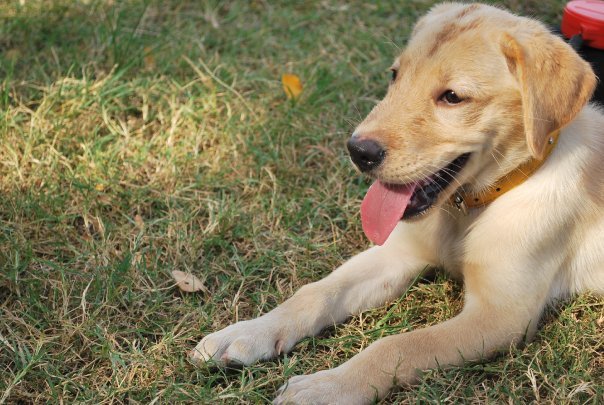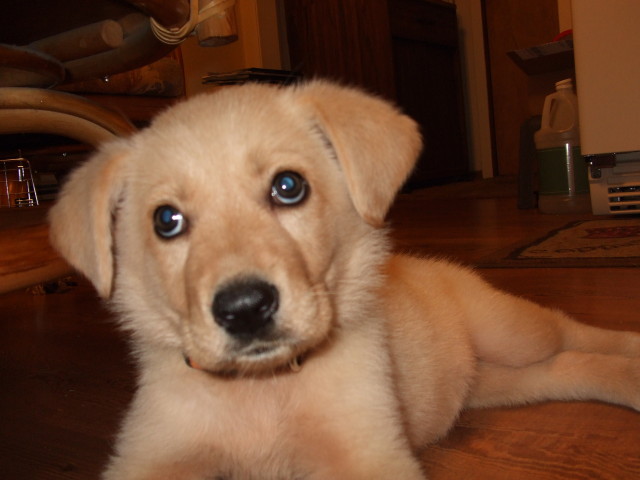QuestionOur 4 year old female Lab had a liter of 12 10 months ago. We kept a female puppy. We also have Corgi so Shadow is not lonely. She began digging out 6 month ago, she would even chew through our wooden fence. We installed a perimeter fence which she ignores, now she is jumping over a 5 foot fence even with a no jump harness on. She is walked 3 or 4 times a week. She will usually jump out when we are gone, but she will jump when we are home. She will jump the fence and come to the front door. This week she began running down the street and onto a busy street. We are at a lose as to what to try next. She gets very nervous and drools when she is in an episode of trying to get out.
AnswerYou can reduce but not cure the problem by leaving her in the fence less. When you are home, let the dogs in. If there are times you can't give give one the attention it needs, crate it. I also suggest leaving the dogs in a crate in the house rather than outside in the fence when you are gone. I hate to see a dog left over 4-5 hours. If you can't make it back to give the dog a mid day break, find a neighbor or a professional dog walker.
It is only natural that a puppy resists its crate at first. What the puppy wants more than anything else is to be others, you, anyone else in the household, and any other pets. In our modern society, even if we are home, other things distract us from the attention an uncrated puppy must have. The only real solution is to crate the dog when you aren't around. The dog may be happier in its den than loose in the house. It relaxes, it feels safe in its den. It rests, the body slows down reducing the need for water and relieving its self. Dogs that have been crated all along do very well. Many of them will rest in their crates even when the door is open. I think the plastic ones give the dog more of a safe, enclosed den feeling. Metal ones can be put in a corner or covered with something the dog can't pull in and chew. Select a crate just big enough for the full grown dog to stretch out in.
Leave it some toys. Perhaps a Kong filled with peanut butter. Don't leave anything in the crate the dog might chew up. It will do fine without even any bedding. You will come home to a safe dog and a house you can enjoy.
A dog that has not been crated since it was little, may take some work. Start out just putting its toys and treats in the crate. Praise it for going in. Feed it in the crate. This is also an easy way to maintain order at feeding time for more than one dog.
The "shut the puppy in a safe room" is a fallacy. Very few houses even have a safe room. How many of us have a room with a hard surfaced floor and nothing else? Most rooms have electrical cords to chew if nothing else. In addition to destroying anything a bored puppy finds to chew, it may choke or have intestinal blockage from the pieces. I had a friend that left her dog in a "safe" room. It ate a hole in the floor covering. The safe rooms fail to give the dog the comfort of the enclosed space their instinct requires. Nor do they restrict activity extending the time the dog can go without relieving itself.
You may find my answer disappointing. The truth is, it is very difficult if not impossible to train a dog not to do something when you aren't there. While leaving some dogs in a fenced yard works, for others, it doesn't. You could add a farm style electric wire at the top of the fence and line it with flagstone or pavers.

 pink rim around eye
Question
his eye
i have a pure yellow lab and hes 3 yrs
pink rim around eye
Question
his eye
i have a pure yellow lab and hes 3 yrs
 11 week old chocolate lab
Question
11 week old lab
We recently got a chocolate la
11 week old chocolate lab
Question
11 week old lab
We recently got a chocolate la
 vitamins for my yellow lab
Questionbruno
QUESTION: what is the best vitamin
vitamins for my yellow lab
Questionbruno
QUESTION: what is the best vitamin
 Young pup drinks too much
Question
Hi, Im Roxy & I have
I recently adopted a
Young pup drinks too much
Question
Hi, Im Roxy & I have
I recently adopted a
 Eating Problems
Question
Datsun
I have a 9 month old,Black male Labrado
Eating Problems
Question
Datsun
I have a 9 month old,Black male Labrado